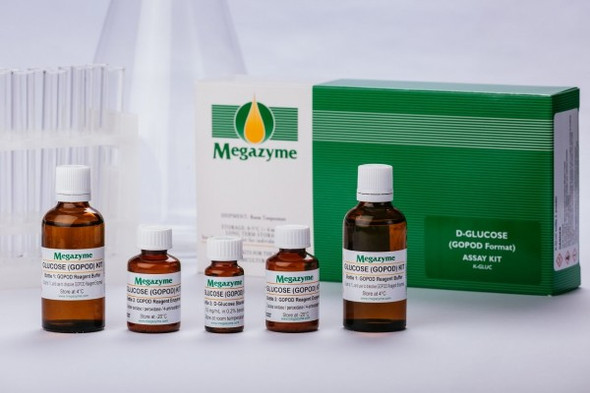Description
D-Xylose Assay Kit - Cat Number: 6601 From Chondrex.
Research Field: Colitis, Membrane Permeability
Clonality: N/A
Cross-Reactivity:
Host Origin: N/A
Applications: N/A
Isotype: N/A
Detection Range: 200 mM-0.31 mM
Sample Type: Plasma
Concentration: N/A
Immunogen:
PRODUCT SPECIFICATIONS
DESCRIPTION: Assay kit to evaluate cellular permeability
FORMAT: 96-well ELISA Plate with non-removeable strips
ASSAY TYPE: Colorimetric Assay
ASSAY TIME: 1 hour
STANDARD RANGE: 20 mM to 0.3 mM
NUMBER OF SAMPLES: Up to 39 (duplicate) samples/plate
SAMPLE TYPES: Serum and Plasma
RECOMMENDED SAMPLE DILUTIONS: Undiluted
CHROMOGEN: N/A (read at 554 nm)
STORAGE: Room Temperature
VALIDATION DATA: Intra-Assay (5.6-8.0%)/Inter-Assay (4.6-6.4%)/Spiking Test (95-104%)
NOTES:
INTRODUCTION
The transport of molecules from the gut into the body occurs either in between the cells or through the cells, paracellularly or transcellularly, respectively. Fluorescent-labeled Dextrans can be used to evaluate paracellular permeability, while D-Xylose, a simple monosaccharide, can be used to evaluate transcellular uptake. In fact, it may be necessary to use two different markers to evaluate permeability. For example, two groups of rats fed total parenteral nutrition supplemented with two different amino acid cocktails showed an increase in fluorescein isothiocyanate (FITC)-labeled dextran permeability in one group over the other, but no discernible difference in D-Xylose uptake between the two groups (1).
This data shows that measuring only one mode of transport may result in incorrect conclusions about permeability. Chondrex, Inc. provides a D-Xylose Assay Kit (Cat # 6601) in a convenient 96-well plate format, as well as FITC-labeled Dextrans (Cat #4009:4 kDa and Cat # 4013:40 kDa) to evaluate cellular permeability in-vitro or in-vivo. Rhodamine-labeled Dextran (Cat # 4014: 70 kDa), which fluoresces at a different wavelength than FITC, is also available, permitting the simultaneous use of two different sized Dextrans which can be individually measured. Moreover, Chondrex, Inc. offers an array of mouse and human anti-bacteria and anti-lipopolysaccharides (LPS) antibody ELISA kits as an alternative method for evaluating gut barrier integrity and proper immune function against these environmental factors. Please visit contact support@chondrex.com or www.chondrex.com for more information.
KIT COMPONENTS

REAGENTS NOT PROVIDED
1. Glacial Acetic Acid*
2. Concentrated Hydrochloric Acid*
*Please use caution and wear the appropriate protective gear when working with strong acids
IN-VITRO PROTOCOL
Please refer to references 2-5 to establish a working protocol
IN-VIVO PROTOCOL
1. Fast mice 4 hours before oral feeding and during the experiment.
2. Feed each mouse 200 µl of the D-Xylose solution by oral gavage. The concentration of D-Xylose must be optimized for individual experimental purposes.
A 100 mg/ml D-Xylose solution (500 mg D-Xylose in 5 ml PBS) works for most purposes. For rats, feeding 2 ml of a 50 mg/ml solution works for most purposes (1).
3. Maintain fasting conditions and wait 1 hour (time may vary depending on individual animals).
4. Collect blood by retro-orbital bleeding, then spin, and collect serum (plasma). Proceed with D-Xylose Assay or store at -20°C until use.
NOTE: It is possible to simultaneously evaluate transcellular permeability with D-Xylose and paracellular permeability with fluorescentlabeled Dextrans (Catalog # 4009, 4013, and 4014). However, follow the appropriate protocols, as incubation times for paracellular permeability and transcellular permeability differ. Also, consult the appropriate animal committee for multiple bleedings on the same day.
ASSAY OUTLINE

PLATE LAYOUT

NOTES BEFORE USING ASSAY
NOTE 1: It is recommended that the standard and samples be run in duplicate.
NOTE 2: Cover the plate with plastic wrap or a plate sealer after each step to prevent evaporation from the outside wells of the plate.







